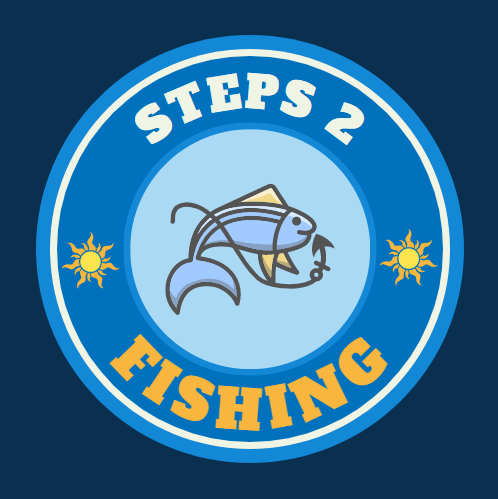
Regarding angling adventures, bobber fishing for Steelhead presents an exhilarating challenge that’s both rewarding and exciting. Steelheads, known for their fighting spirit and elusive nature, require a strategic approach, making bobber fishing an excellent choice.
In this guide, we’ll walk you through the art of bobber fishing for Steelhead, providing insights and tips to maximize your success on the water.

The Best Spot for Bobber Fishing for Steelhead
Locating the right fishing spot requires understanding steelhead behavior. Look for areas with moderate currents, underwater structures, and holding pockets where Steelhead might rest. Popular spots include river bends, deep pools, and surrounding submerged rocks.

Understanding Steelhead Behavior
Steelhead, a species of rainbow trout, are anadromous fish that migrate from freshwater rivers to the open ocean and back. Their return to freshwater for spawning creates an incredible angling opportunity. Before you hit the water, it’s crucial to understand their behavior and habitat. Steelheads hold in deeper pools, runs, and pockets, seeking cover near underwater structures and overhanging banks. These areas serve as prime locations to target when bobber fishing for Steelhead.
Selecting the Right Equipment for Bobber Fishing for Steelhead
The right gear is paramount for a successful steelhead bobber fishing expedition.
Selecting the Right Gear
Choose a medium to medium-heavy rod with a high-quality spinning reel. An 8- to 10-foot rod perfectly balances control and casting distance.

Choosing the Perfect Line
Use an underwater mainline of around 10 to 12-pound test monofilament or fluorocarbon for its invisibility. Opt for a low-visibility braided mainline, followed by a fluorocarbon leader. This combination provides strength and stealth, increasing your chances of being cautious steelheads.
Picking the Right Float
Select a float based on water conditions. For faster currents, choose larger floats for stability and smaller ones in slower waters.
Weights and Swivels
Attach split-shot weights above a swivel to control the float’s drift. This setup helps control depth and presentation.
Bobber and Bait Considerations
Selecting the right bobber and bait combination is where strategy comes into play. A slip bobber setup allows you to adjust the depth easily. Fluorescent-coloured bobbers work well, enhancing visibility in various lighting conditions. As for bait, Steelhead is attracted to cured salmon eggs, sand shrimp, and even artificial soft plastics that mimic their prey. Experiment with different bait options to determine what the Steelhead is actively feeding on that day.

Mastering the Presentation
Bait Selection
Natural baits like roe, sand shrimp, and nightcrawlers work wonders for Steelhead. Match the bait to local forage and water conditions.
Setting the Depth
Adjust your float’s placement to present the bait at different depths. Start shallow and gradually go deeper until you find where the Steelhead is actively feeding.
Reading the Water
Identify likely Steelhead holding spots – behind rocks, along seams, and in eddies. Cast upstream and let your presentation drift naturally.

Rigging for Bobber Fishing for Steelhead
The rigging for steelhead bobber fishing is straightforward yet crucial. Thread your mainline through the bobber, then attach a small bead followed by a bobber stop. This setup keeps the bobber from sliding to the bait. A size 8 to 10 bait holder hook is commonly used, allowing for effective bait presentation. The key is to ensure the bait is positioned at the right depth, usually a couple of feet off the bottom, where Steelhead often holds.
Some Useful Tips for Steelhead Bobber Fishing
Casting and Patience
Casting accuracy and technique play a role in successful steelhead bobber fishing. Cast upstream of your target area and allow the bait to drift naturally downstream. Keep your line taut but not overly tight to detect subtle bites. Patience is vital; Steelhead might inspect the bait before committing to a bite. Stay focused and engaged, watching for any movement in the bobber.
Reading the Bobber’s Signals
As the Steelhead interacts with your bait, the bobber’s movements will tell you a story. A slight bob or twitch might indicate a curious steelhead investigating the bait. A sudden dive or sideways movement could signal a strike. Stay attuned to these signals, as your ability to interpret them will greatly improve your success rate.
Master the Mend
Mending your line during the drift prevents unnatural drag on your presentation, ensuring a more enticing movement.
Stay Stealthy
Approach the riverbank quietly and avoid excessive movement that might spook a cautious steelhead.

Hookset and Landing
When you see the bobber dive or move unexpectedly, resist the urge to set the hook immediately. Allow the Steelhead to fully take the bait before delivering a firm hookset. Steelheads have bony mouths, so a solid hookset is crucial to secure the fish. Once hooked, be prepared for an intense battle. Keep the line tensioned and guide the fish away from obstacles to prevent break-offs.
What to Do When You Get a Bite
When you see your bobber disappear beneath the water, it’s a sign of a bite. Wait a second or two to ensure the Steelhead has taken the bait properly, then set the hook with a firm upward motion. Remember, patience is key – don’t rush the hookset.

Adapting to Changing Conditions
Weather and water conditions can significantly impact steelhead behavior. Cloudy days and slightly turbid water can make Steelhead more aggressive. In contrast, clear and sunny days require a more subtle presentation. Pay attention to these factors and be prepared to adapt your tactics accordingly.
Common Mistakes to Avoid
Novice anglers often make mistakes that can spook Steelhead. Avoid making loud noises, casting shadows over the water, or using too large or unnatural-looking baits. Steelheads are cautious creatures, so subtlety is crucial.
Conclusion
Bobber fishing for Steelhead offers a thrilling angling experience that combines strategy, patience, and the thrill of the fight. Understanding steelhead behavior, selecting the right equipment, and perfecting your presentation are key elements to a successful outing. Whether you’re a seasoned angler or a newcomer to steelhead fishing, embracing the art of bobber fishing will undoubtedly lead you to memorable encounters with these remarkable fish.
FAQs
Q. What is the best line for steelhead fishing bobber?
A. The best line for steelhead fishing with bobbers is typically a strong monofilament or fluorocarbon line in the range of 8 to 12 pounds test.
Q. What size float to use for Steelhead?
A. The float size depends on water conditions. Use a larger float in faster currents and a smaller one in calmer waters.
Q. What baits are best for bobber fishing?
A. Effective baits include roe bags, nightcrawlers, and soft plastic jigs. Experiment to find the bait that works best for your target Steelhead.
Q. What colors does Steelhead see best?
A. Steelheads can see various colors but are more sensitive to shades of blue and green. Natural-looking baits in these hues tend to be effective.
Q. What is the best steelhead bait?
A. The best steelhead bait varies based on location and water conditions. Anglers commonly favor Roe bags and jigs.


Leave a Reply